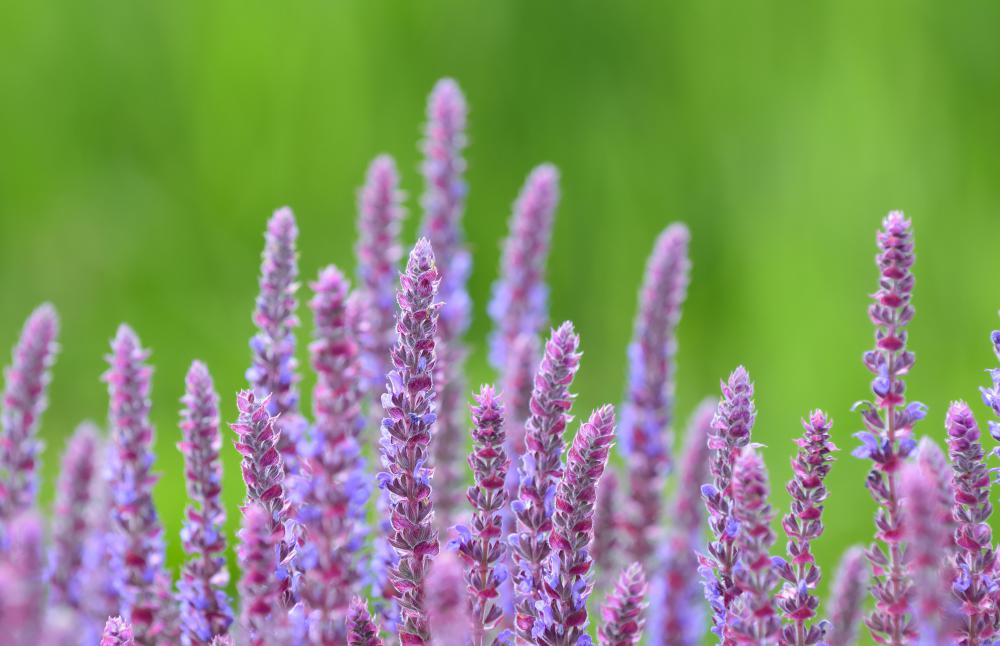At HomeQuestionsAnswered, we're committed to delivering accurate, trustworthy information. Our expert-authored content is rigorously fact-checked and sourced from credible authorities. Discover how we uphold the highest standards in providing you with reliable knowledge.
What Is Purple Sage?
Purple sage is a cultivated variety, called a cultivar, of common garden sage. This variety has been cultivated for its purple leaves and is commonly used as an ornamental plant. Purple sage, like common garden sage, is an edible, culinary herb. Its species name is Salvia officinalis, and it's in the Lamiaceae, or mint, plant family.
This plant can be grown as an ornamental to add foliage color to borders, rock gardens and sunny perennial beds. In the herb garden, purple sage can be planted along with, or instead of, common sage. This cultivar of sage makes an attractive edible border around herb gardens and vegetable gardens. The flowers attract butterflies and beneficial insects as well.

Purple sage grows 1 to 2 feet (about 30 to 60 cm) tall, with a spread of 1 to 1.5 feet (about 30 to 45 cm) wide. This small shrub is a herbaceous perennial. As the plants mature, they develop a woody stem. Purple sage survives winter temperatures as low as -10 to 0°F (-23 to -17°C).
In the spring, small lavender-blue flowers emerge. The new foliage grows purple and slowly matures to silver-gray as it matures through the season. The plants often have a mix of silver-gray and purple leaves, as new growth continues through the season.
This drought-tolerant plant grows best in full sun and dry, rocky soil conditions or sandy loam. Purple sage can tolerate light shade, but grows poorly in full shade. Wet, damp or waterlogged soil can cause purple sage roots to rot.

The plants should be spaced 1 to 2 feet (about 30 to 60 cm) apart. In areas where winter temperatures fall below the minimum for this sage cultivar, it can be grown as an annual. As the plants mature, the woody stems get leggy. This can be avoided by replacing the plants every three to four years.
New plants can be started from seed, rooted cuttings, layering or be purchased at a nursery. They should be planted in the spring after the last frost date. Purple sage is winter hardy, but new, tender plants used to conditions in a greenhouse are sensitive to spring frosts.
Sage can be harvested continuously during the growing season by removing a few leaves from each plant. The plant's fragrant leaves have many culinary uses. They can be dried for storage or used fresh in soups, meat dishes, teas and other dishes.
AS FEATURED ON:
AS FEATURED ON:












Discuss this Article
Post your comments